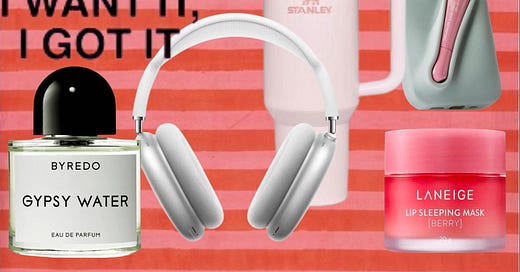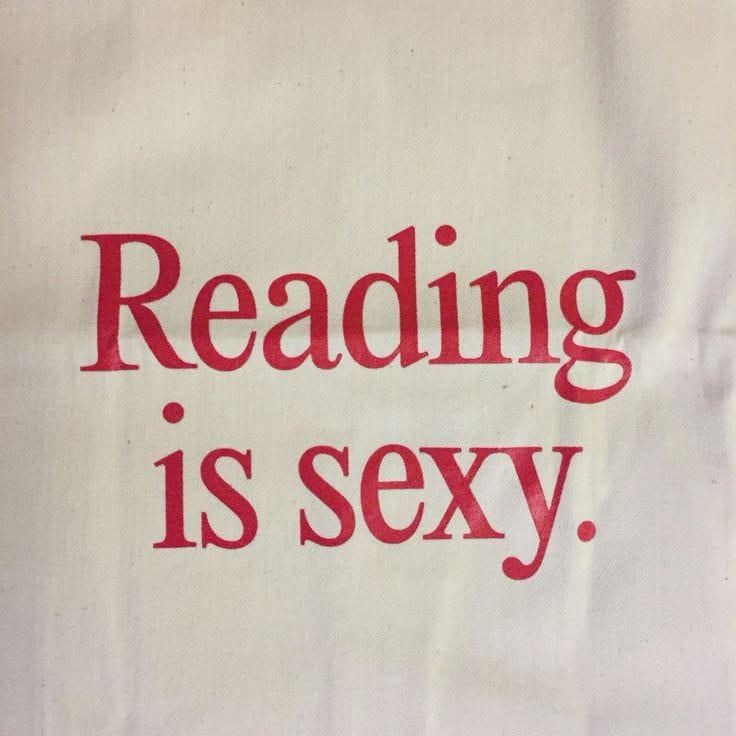#006 - I can't stop thinking about mimetic desire
+ a comprehensive list of books to get you inspired...
I use my notes app incessantly. I wish I was one of those people that could keep a physical note book of all my musings and thoughts (and while I am a huge fan of the physical to do diary & lists, a general thought dump journal just seems out of reach for me). I often do random culls in my notes app, attempting to tidy them up to make the contents actually readable, with the goal for it to become a productive place I can return to, to be inspired by thoughts. During one of these recent clean ups, I discovered a note on a concept called mimetic desire, which sent me into a research spiral.
According to my very lack lustre and spray gun notes, I discovered the concept of mimetic desire in an episode of S2 of The White Lotus (man I miss that show, where is season three already). There’s nothing I love more than a show that is clever, funny, engaging, boasts beautiful cinematography and wardrobe, but also actually leads to some valuable insights on new topics. So I guess it makes sense that in (apparently) Episode 5 of Season 2, I discovered the concept of mimetic desire between two of their characters (Ethan and Cameron), wrote it down in my Notes App to learn more about, and I’ve only just rediscovered said note. And I am so glad that I did, because I looooove what I have now learnt.
What is mimetic desire?
Coined by French social scientist René Girard, it is explained as the tendency to shape our desires based on the desires of others we admire or respect, rather than solely on instinctual needs. In laymen’s terms, “I want what they’ve got because they’ve got it and I think they’re cool or they have a perceived higher social status than me”. It is the concept that validation from others can strongly influences our perceptions and desires… but it might not actually have anything to do with us, what we want or our own personal tastes. It’s hard for us to tell the difference when we are in the situation however.
It explains why teenage girls and women across the planet started bowing down to the all-mighty Stanley cup at the exact same time, why so many millennial woman is paying silly amounts of money to have the Rhode lip gloss case shipped from the US (and it’s correlating lip balm, which to my knowledge, is no different to many lip balms we can get here ingredient wise), and why a members only club like Soho House has seen so much success over the past 25 years or so.
While our biological instincts drive us towards fulfilling basic needs like shelter and sustenance, desires are influenced by external factors, particularly the desires of others we admire or respect.
We're interconnected in an unending chain of desire, much like a human centipede. If Hailey Bieber has assigned value to something, and if other people find her aspirational (i.e. she’s pretty and rich and has a very popular husband), then all of a sudden, Woman A desires it as well. Then Woman B finds herself adopting Woman A’s desires as her own (even if she wasn’t that keen on Hailey Bieber to begin with), sacrificing her own sense of self-awareness or personal desires, just to pursue what someone else covets and sees as valuable.
Models of desire can range from individuals to institutions, serving as benchmarks for shaping our aspirations and life choices, impacting everything from career decisions to our consumer behaviour. Whether it's emulating a successful peer’s career path or being influenced by an influencer's lifestyle showcased on social media, mimetic desire plays a significant role in guiding our desires and aspirations.
It’s also why social proof works as a fail-proof marketing tool and something that I always spout to our BPR clients… whether you’re hawking skincare or jewellery… if you have the social proof that it’s what other people want, you’re on the fast track to success.
Of course when I learnt more about this concept, the first thing I thought was just how much social media exacerbates mimetic rivalry, intensifying the urge to compete and compare oneself with others online. Mimetic desire is something that impacts everyone so much in modern life that I can’t believe we’re not studying it more deeply or more aware of it as a concept overall.
It’s pretty much fuelling the entire influencer business on social media. Social platforms have the power to flatten and homogenise experiences, heightening the pressure to conform to established models of desire, while also striving for individual differentiation.
As I start my journey into motherhood, I notice it strongly in this microcosm too. From the prams people suggest to the carriers so many mum’s invest in, many of these things act as status symbols to the outside world, without actually having anything to do with the personal taste of the individual.
So, while I am sure the overall concept of mimetic desire may not be something shockingly new to you, I think by knowing what it is called, and having the power to research it further and understanding the behaviour patterns that lead to the decisions we make influenced by it, it allows us to have some cognitive control over how we consume.
If you’ve made it to the end of this explanation, I so encourage you to reflect on your own desires and what influences might be shaping them, and break down what exactly might be your taste, or what you’re just currently seeking because someone you think seems cool, wants or has. Chances are, if they want or have it, they’ve probably just been conditioned to feel that way by someone else. And so on it goes…
Further source material on mimetic desire, if you’re interested:
Listen to How to discover your own taste — The Ezra Klein Show (A NYT podcast)
Read Wanting: The power of mimetic desire in modern life — book by Luke Burgis
Watch Lecture I: Introduction to Mimetic Theory | René Girard’s Mimetic Theory by David Perell & Jonathon Bi
—
Kinda obsessed with reading…
I’ve been in a bit of a slump with books lately, probably because majority of the books I am reading I’ve been grabbing from my street library or the local op shop, not actually spending the big bucks on buying the books that have been on my TBR for far too long.
However I thought I’d provide this article from the New York Times that outlines their best fiction & non-fiction books from the past 25 years, which acts as excellent inspiration for what you can read next. They’ve even got a snazzy little filter where you can decide between fiction and non-fiction, and whittle down what years you want to read from.
PS — if you’re a big reader, follow me on Goodreads here! I log every single book I read (as well as audiobooks I listen to… don’t @ me). I love seeing what other people read too so please add me so I can get even more inspo!
A final remark…
This newsletter was a super short and sweet one (last week’s was loooong, and frankly, I just really really wanted to talk about mimetic desire before I moved on to my next hyperfocus). So, I’ll leave you with this epic idea for your next party:
 Tiktok failed to load.
Tiktok failed to load.Enable 3rd party cookies or use another browser
—
and with that, friends, I’ll see you next time.
if you’ve not yet subscribed for the newsletter, i’d love if you’d consider doing so. you can also forward it to a friend, share it on your IG story or text it to your family—whatever moves you to do to support me if you feel so inclined. growing this space is really important to me, and if you enjoy what you read here, it would mean a lot to me if you’d share it with a friend you think might also enjoy it.







